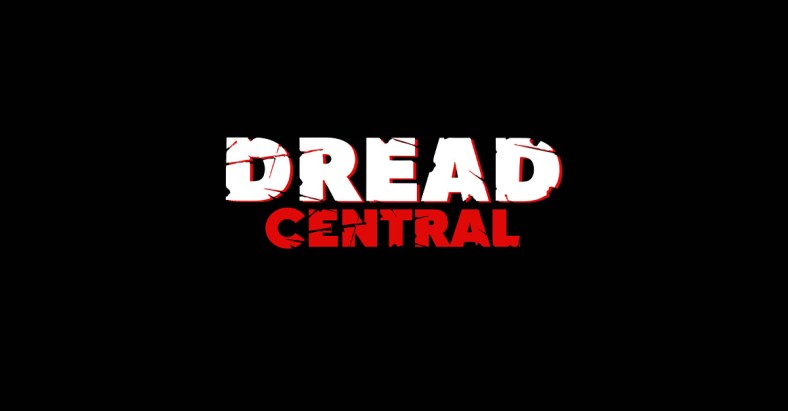Gateway Horror in SOMETHING WICKED THIS WAY COMES

Something Wicked This Way Comes is a sensational piece of gateway horror. Even more sensational, however, is just how resonant it becomes as you age. The horrors of Ray Bradbury’s 1962 novel and the Disney-lite terror of Jack Clayton’s 1983 filmic adaptation are amplified. The insidious undercurrent of childhood fears, in retrospect, becomes all the more frightening as an adult. In other words, Something Wicked This Way Comes is a perennial piece of gateway horror for a reason.
Synopsis:
A villainous carnival owner, Mr. Dark, preys upon unsuspecting Midwestern townsfolk by granting wishes, but for a price.
Bradbury’s original novel and the movie, for the most part, follow the same trajectory. 13-year-olds Jim Nightshade and William Halloway are best friends living in their Midwestern hometown of Green Town, Illinois. Like most kids their age, Will and Jim are inoculate themselves from the true terrors of the world, spending their days jaunting around town, buying gumballs, and ribbing William’s father, Charles. Middle-aged and enduringly unhappy, Charles is envious of Jim and Will’s youth, envy that psychologically prohibits him from truly being close with his son.
Late one October evening, however, a traveling carnival comes to town, led by the mysterious Mr. Dark, an enigmatic figure with the arcane capacity to grant the Green Town residents’ secret desires. Jim and William, in conventional horror fashion, discover that Mr. Dark and his merry band of carnies are really enslaving the residents, feeding off their lifeforce and perverting their desires in cruel, ghastly ways.
Something Wicked This Way Comes was one of the first horror novels I read– a children’s horror novel paced and written for an adult audience. Naturally, I empathized and identified with both Will and Jim. I relished in their adventures. I thought of my own childhood friends, how we’d spend our days outdoors and return only when the sun went down. Similarly, I beamed with familiarity every time Will and Jim defeated a monster and felt discouraged every time the adults in town met their claims of monstrous carnies with incredulity. The fates of Mr. Cooger, the carnie who ages in reverse, or Miss Foley, the schoolteacher rendered both young and blind, frightened me, but never resonated beyond an ephemeral literary jolt. It was scary, yes, but in the myopic mind of a child, I thought it could never happen to me.
Worse, as a child, I didn’t pity Charles Halloway so much as I regarded him with contempt. I thought he was whiny, and perhaps on account of my own relationship with my father, I simply wanted him to be better. As Charles Halloway longed for his youth, I simply wanted him to grow up. Now, in retrospect, the plight of Charles Halloway is the scariest thread of both the book and the movie. It is also the most optimistic.
Charles Halloway, unlike Jim and Will, knows too well the true horrors of the world. Charles knew intimately of the terrors that aren’t’ monsters in the closet or witches under the bed, but the truly frightening things like aging and disease, death and debt, broken dreams and shattered promises. He knows of love that’s fickle and wispy. He knows how Will saw himself in Charles, and how he pitied it. Charles fears his age and inevitable death, like a nocturnal Rolodex of all the things he longed to do but no longer could. While Jim and Will battle with the Dust Witch, Charles lies awake in bed– “But men in middle age? They know that hour well. Oh God, midnight’s not bad, you wake and go back to sleep, one or two’s not bad, you toss but sleep again. Five or six in the morning, there’s hope, for dawn’s just under the horizon. But three, now, Christ, three A.M.! Doctors say the body’s at low tide then. The soul is out. The blood moves slow. You’re the nearest to dead you’ll ever be save dying. Sleep is a patch of death, but three in the morn, full wide-eyed staring, is living death!”
It’s a lyrical and literary slice of prose, the meaning of which eluded me as a child. I didn’t understand the fears and aches of someone like Charles. I was afraid of Mr. Dark and the Dust Witch’s balloon. I was afraid of evil carnivals and chases through town, moments where I might have to hold my breath in the sewer below while a monster hunted me on the surface above.
I’ve recently re-read (it’s one of my favorite novels) and re-watched the movie and was truly astounded to see how radically my sensibilities had shifted. It seems too obvious in retrospect, but Jim and Will aren’t the heroes of the novel. No, Charles is. Charles saves them from the clutches of Mr. Dark, quite literally kills him with kindness, and stops the proliferation of the evil carnival dead in its tracks. Resultantly, Charles’s victory draws him closer to his son, and despite his grief and fears, his life is recontextualized, and for the first time in a very long time, Charles is happy.
The most incredible thing, then, is just how poignant and scary Something Wicked This Way Comes is for children and adults alike. The best horror is timeless. The best horror is universal. Gateway horror, in a sense, has a way of warping the mind. The lens to the past sometimes hyperbolizes our childhood fears and the movies that exploited them. Sometimes, when revisiting an old favorite, we’re left wondering what it was that managed to scare us so intensely at the time. Nostalgia is capricious that way. Something Wicked This Way Comes, however, like the central Benjamin Button carousel, has the capacity to truly take us back in time. Its scares are evergreen and resonant, and it is abounding with heart. It’s not just something wicked, it’s something truly wonderful.

Categorized: Editorials News
